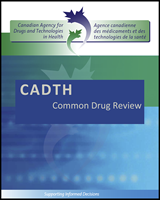Pulmonary arterial hypertension (PAH; also classified as Group 1 pulmonary hypertension [PH]) is a rare, debilitating, progressive, and life-threatening disease of the pulmonary vasculature, characterized by vascular proliferation and remodelling of small pulmonary arteries. PAH is defined by an increase in mean pulmonary arterial pressure (mPAP) ≥ 25 mm Hg and a pulmonary wedge pressure of ≤ 15 mm Hg. If left untreated, it can lead to right heart failure and premature death.
Prior to the availability of PAH drug therapies, the median survival time was 2.8 years, with survival rates of 68%, 48%, and 34% at one, three, and five years following diagnosis, respectively. The survival of patients with PAH has improved since the introduction of advanced PAH therapy, with current average survival in adults reaching from five to seven years following diagnosis.Recent survival data for patients with idiopathic PAH (IPAH) or familial PAH (FPAH), which are the two largest subgroups of PAH, from an American registry estimate the one-, three-, five-, and seven-year survival rates to be 85%, 68%, 57%, and 49%, respectively.
Health Canada has approved eight treatment options covering four different classes of drugs for PAH, World Health Organization (WHO) Group 1:
Prostanoids (epoprostenol, treprostinil)
Endothelin receptor antagonists (ERAs) (bosentan, ambrisentan, macitentan)
Phosphodiesterase type 5 (PDE-5) inhibitors (sildenafil, tadalafil)
Soluble guanylate cyclase (sGC) stimulator (riociguat).
Macitentan is an orally active, non-peptide, potent dual ERA (ETA and ETB). In Canada, macitentan is indicated for the long-term treatment of PAH (WHO Group I) to reduce morbidity in patients whose WHO Functional Class (FC) is II or III, whose PAH is either idiopathic or heritable, or associated with connective tissue disease or congenital heart disease. Macitentan is available as 10 mg film-coated tablets and is to be taken orally at a dose of 10 mg once daily, with or without food.
The objective of this review was to evaluate the beneficial and harmful effects of macitentan (Opsumit) as monotherapy or in combination with other drugs for the treatment of PAH patients (WHO Group 1) of WHO FC II or III.
This review report was prepared by the Canadian Agency for Drugs and Technologies in Health (CADTH). In addition to CADTH staff, the review team included a clinical expert in respirology who provided input on the conduct of the review and the interpretation of findings.
Through the CADTH Common Drug Review (CDR) process, CADTH undertakes reviews of drug submissions, resubmissions, and requests for advice, and provides formulary listing recommendations to all Canadian publicly funded federal, provincial, and territorial drug plans, with the exception of Quebec.
The report contains an evidence-based clinical and/or pharmacoeconomic drug review, based on published and unpublished material, including manufacturer submissions; studies identified through independent, systematic literature searches; and patient-group submissions. In accordance with CDR Update — Issue 87, manufacturers may request that confidential information be redacted from the CDR Clinical and Pharmacoeconomic Review Reports.
The information in this report is intended to help Canadian health care decision-makers, health care professionals, health systems leaders, and policy-makers make well-informed decisions and thereby improve the quality of health care services. The information in this report should not be used as a substitute for the application of clinical judgment with respect to the care of a particular patient or other professional judgment in any decision-making process, nor is it intended to replace professional medical advice. While CADTH has taken care in the preparation of this document to ensure that its contents are accurate, complete, and up-to-date as of the date of publication, CADTH does not make any guarantee to that effect. CADTH is not responsible for the quality, currency, propriety, accuracy, or reasonableness of any statements, information, or conclusions contained in the source documentation. CADTH is not responsible for any errors or omissions or injury, loss, or damage arising from or relating to the use (or misuse) of any information, statements, or conclusions contained in or implied by the information in this document or in any of the source documentation.
This document is intended for use in the context of the Canadian health care system. Other health care systems are different; the issues and information related to the subject matter of this document may be different in other jurisdictions and, if used outside of Canada, it is at the user’s risk. This disclaimer and any questions or matters of any nature arising from or relating to the content or use (or misuse) of this document will be governed by and interpreted in accordance with the laws of the Province of Ontario and the laws of Canada applicable therein, and all proceedings shall be subject to the exclusive jurisdiction of the courts of the Province of Ontario, Canada.
CADTH takes sole responsibility for the final form and content of this document, subject to the limitations noted above. The statements and conclusions in this document are those of CADTH and not of its advisory committees and reviewers. The statements, conclusions, and views expressed herein do not necessarily represent the views of Health Canada or any Canadian provincial or territorial government. Production of this document is made possible by financial contributions from Health Canada and the governments of Alberta, British Columbia, Manitoba, New Brunswick, Newfoundland and Labrador, Northwest Territories, Nova Scotia, Nunavut, Ontario, Prince Edward Island, Saskatchewan, and Yukon.

